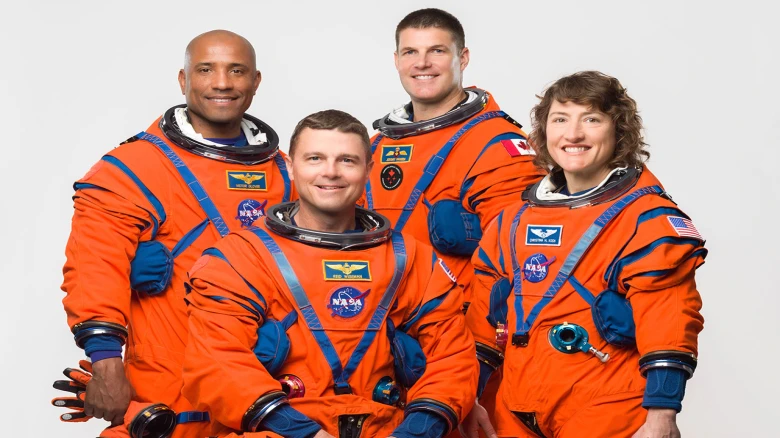National

"The Artemis II crew represents thousands of people who have worked tirelessly to get us to the stars," NASA Administrator Bill Nelson said on stage. "This is the crew of humanity."
Digital Desk: NASA named the first woman and African American astronauts ever assigned to a lunar mission on Monday, introducing them as part of the four-person team chosen to fly on what would be the first crewed voyage around the moon in more than 50 years.
Christina Koch, an engineer who already holds the record for the longest continuous female spaceflight and participated in NASA's first three all-female spacewalks, has been named a mission specialist for the Artemis II lunar flyby, which is expected to take place as early as next year.
She will be joined by Victor Glover, a U.S. Navy aviator and four-spacewalk veteran who NASA has designated as Artemis II's pilot. He will be the first African-American astronaut to be sent on a lunar mission.
As mission specialists, Jeremy Hansen, a Royal Canadian Air Force colonel and the first Canadian ever chosen for a flight to the moon, and Reid Wiseman, a former US Navy fighter pilot, round out the four-person crew.
All three NASA astronauts selected for the Artemis II mission have previously served aboard the International Space Station. Hansen is a first-time spaceflight crew member.
The Artemis II quartet was introduced at a pep rally-style event attended by journalists, local elementary school students, and space industry leaders, which was televised from Houston at NASA's mission control base, the Johnson Space Center.
"The Artemis II crew represents thousands of people who have worked tirelessly to get us to the stars," NASA Administrator Bill Nelson said on stage. "This is the crew of humanity."
Artemis II will be the first crewed flight of an Apollo successor programme aimed at returning astronauts to the moon's surface later this decade and eventually establishing a sustainable outpost there as a stepping stone to future human exploration of Mars.
The initial Artemis I mission was completed successfully in December 2022, capping the inaugural launch of NASA's powerful next-generation mega-rocket and its newly built Orion spacecraft on a 25-day uncrewed test flight.
The goal of the 10-day, 1.4-million-mile (2.3-million-kilometer) Artemis II journey around the moon and back is to demonstrate that all of Orion's life-support apparatus and other systems will function properly in deep space with astronauts aboard.
Artemis II will travel 6,400 miles (10,300 kilometres) beyond the moon's far side before returning, making it the closest pass humans have made to Earth's natural satellite since Apollo 17, which carried Gene Cernan and Harrison Schmitt to the lunar surface in December 1972.
They were the last of 12 NASA astronauts - all of them white men - who walked on the moon during six Apollo missions starting in 1969 with Neil Armstrong and Edwin "Buzz" Aldrin.
LUNAR LANDING PLAN
Artemis II is expected to reach a distance of more than 230,000 miles (370,000 km) from Earth at its farthest point. The International Space Station's typical low-Earth orbit altitude is about 250 miles (420 km) above the planet.
The Artemis II crew will practise manual manoeuvres with the Orion spacecraft in Earth orbit atop NASA's two-stage Space Launch System (SLS) rocket before returning to ground control for additional tests and the lunar flyby portion of the mission.
The outbound journey would end with Orion looping around the moon, then using both the Earth's and the moon's gravity to send the spacecraft on a four-day propulsion-free return flight ending in a splashdown at sea.
If Artemis II is a success, NASA plans to follow it up a few years later with the program's first lunar landing of astronauts, one of whom will be a woman, on Artemis III, and then continue with additional crewed missions about once a year after that.
In comparison to the Apollo programme, which arose from the Cold War-era U.S.-Soviet space race, Artemis is a more broad-based effort, involving commercial partners such as Elon Musk's SpaceX and government space agencies from Canada, Europe, and Japan.
It also represents a significant shift in NASA's human spaceflight ambitions beyond low-Earth orbit after decades of focusing on the Space Shuttle and the International Space Station.
Leave A Comment